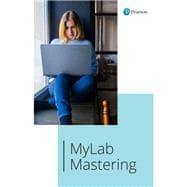Precalculus: A Right Triangle Approach gives you the strength of solid mathematics in an engaging, friendly way. It draws from the authors' extensive classroom experience to connect conceptual understanding while maintaining the level of mathematics required. In the 5th Edition new resources lift you to reach your full potential, including Key Ideas for the next section, objective video and note-taking guides, and much more. Nationally recognized instructors Jessica Bernards and Wendy Fresh join the author team to add fresh perspective to this revision.
Personalize learning with MyLab Math with Pearson eText
This flexible digital platform combines unrivaled content, online assessments, and customizable features to personalize learning and improve results.
Pearson eText is an easy-to-use digital textbook available within MyLab® that lets you read, highlight and take notes, all in one place.
NOTE: Before purchasing, check with your instructor to confirm the correct ISBN. Several versions of the MyLab and Mastering® platforms exist for each title, and registrations are not transferable. To register for and use MyLab, you will need either a course ID from your instructor or an invitation link that your instructor will send you directly.
Used books, rentals, and purchases made outside of Pearson
If purchasing or renting from companies other than Pearson, the access codes for the MyLab platform may not be included, may be incorrect, or may be previously redeemed. Check with the seller before completing your purchase.











